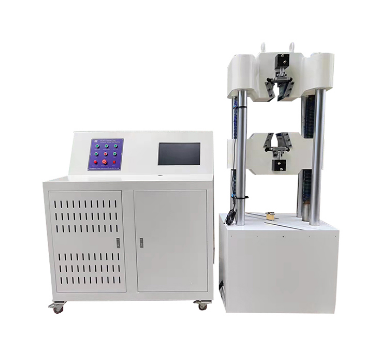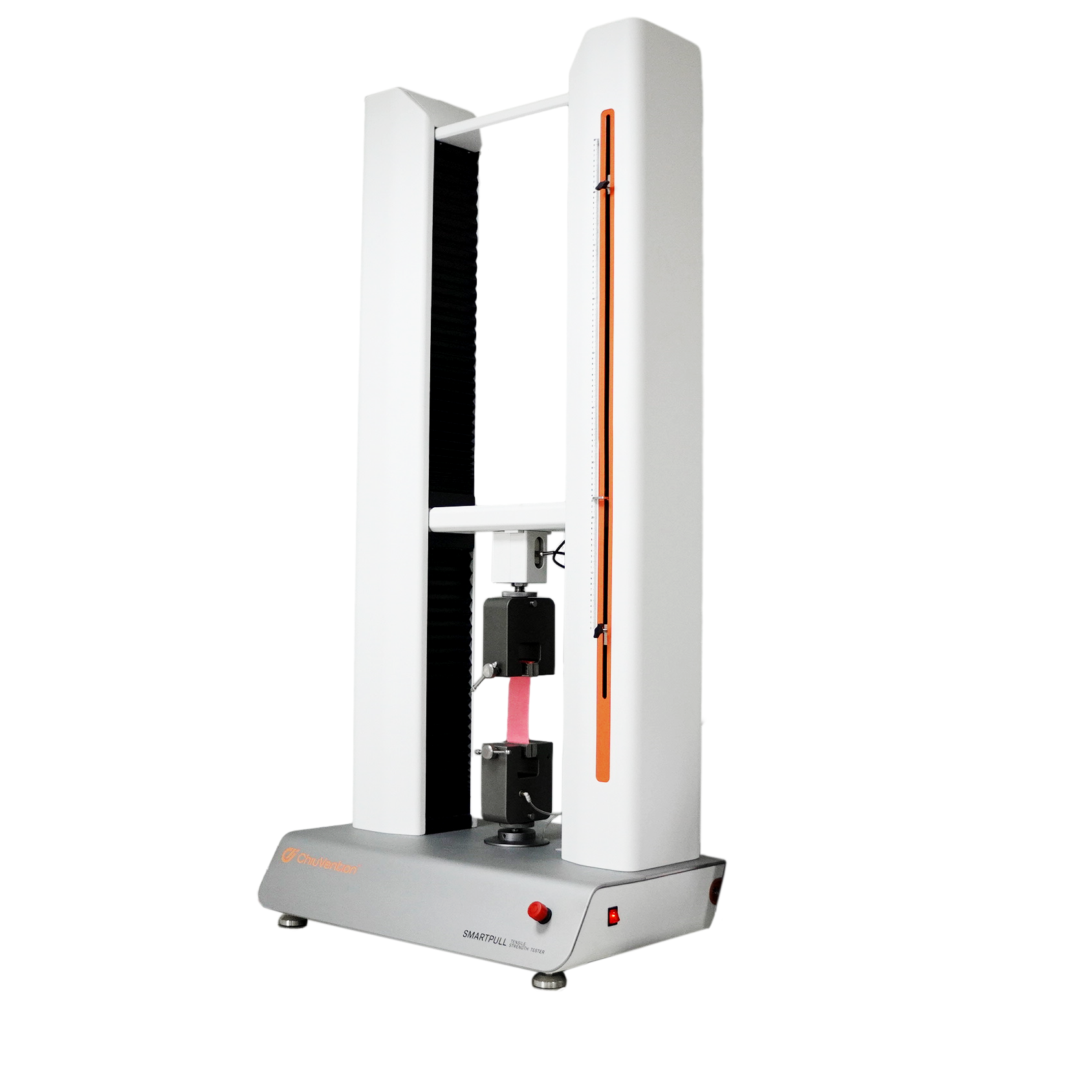Meet the powerhouse in material testing—the Universal Testing Machine (UTM), or as we call it, the tensile testing machine! This incredible gadget pulls and squeezes raw materials or parts to check how strong they are in both tension and compression. Whether you’re into quality checks or diving into research projects, the UTM has your back, handling tests for both small and hefty loads. Here are the most complete FAQs about tensile testers.
Ready to unravel the mysteries of fabric tensile strength tester? Stick around, and we’ll answer all the burning questions, keeping it simple and engaging from start to finish. Let’s dive into the world of testing – buckle up for answers and an adventure!
Q1. What is the working principle of the tensile tester?
A tensile testing machine operates by securing a sample between two grips and gradually applying tension until the sample breaks. The material’s dimensions, such as length and cross-sectional area, are known. By also knowing the rate of elongation, one can easily compute the tensile strength.
The test yields a graph depicting the relationship between applied load (weight) and displacement (stretching). Comparing materials becomes challenging due to the weight required for stretching, which depends on both size and material properties.
In structural engineering and industries, it’s crucial to compare materials accurately. Designers and engineers use this comparison to pick the right building materials, making sure structures meet standards and handle real-life forces. That’s where the tensile strength test comes in. It gives essential data and helps make smart choices when selecting materials and designing structures. In simple terms, it’s a key tool for making sure buildings and products are strong and reliable.
Q2. What are the classifications of tensile testers?
There are two main types of tensile testing machines. Let’s discuss it one by one:
Hydraulic Tensile Testing Machines:
Hydraulic tensile test machines use a hydraulic system to apply force to a test specimen and determine its properties. These machines typically feature a single or dual-acting piston that applies a substantial force to the specimen, following Pascal’s law.
To control the loading rate, a hydraulic servo system incorporates an electronic servo valve that adjusts the movement of hydraulic fluid. These machines are specifically designed for testing metals and concrete.
Electromechanical Tensile Testing Machines:
Electromechanical tensile testers utilize a variable-speed motor to apply the necessary tensile load during a test. The machine operates by employing a variable-speed electric motor connected to 1–4 screws responsible for moving the crosshead through a reduction gearbox. A microprocessor controls the variable-speed motor, allowing for adjustments to the crosshead speed. These testing machines are tailored for assessing polymers, elastomers, composites, and textiles.
Q3: What are the characteristics of a tensile tester? How big is the range of pulling force usually?
Universal Testing Machines (UTMs) possess a modular design that consists of key components that collectively enable the versatile testing of various materials. The fundamental characteristics of a UTM include:
Mechanical Structure:
- The UTM typically features one or two columns providing structural support to the machine. This robust framework forms the foundation for conducting diverse tests.
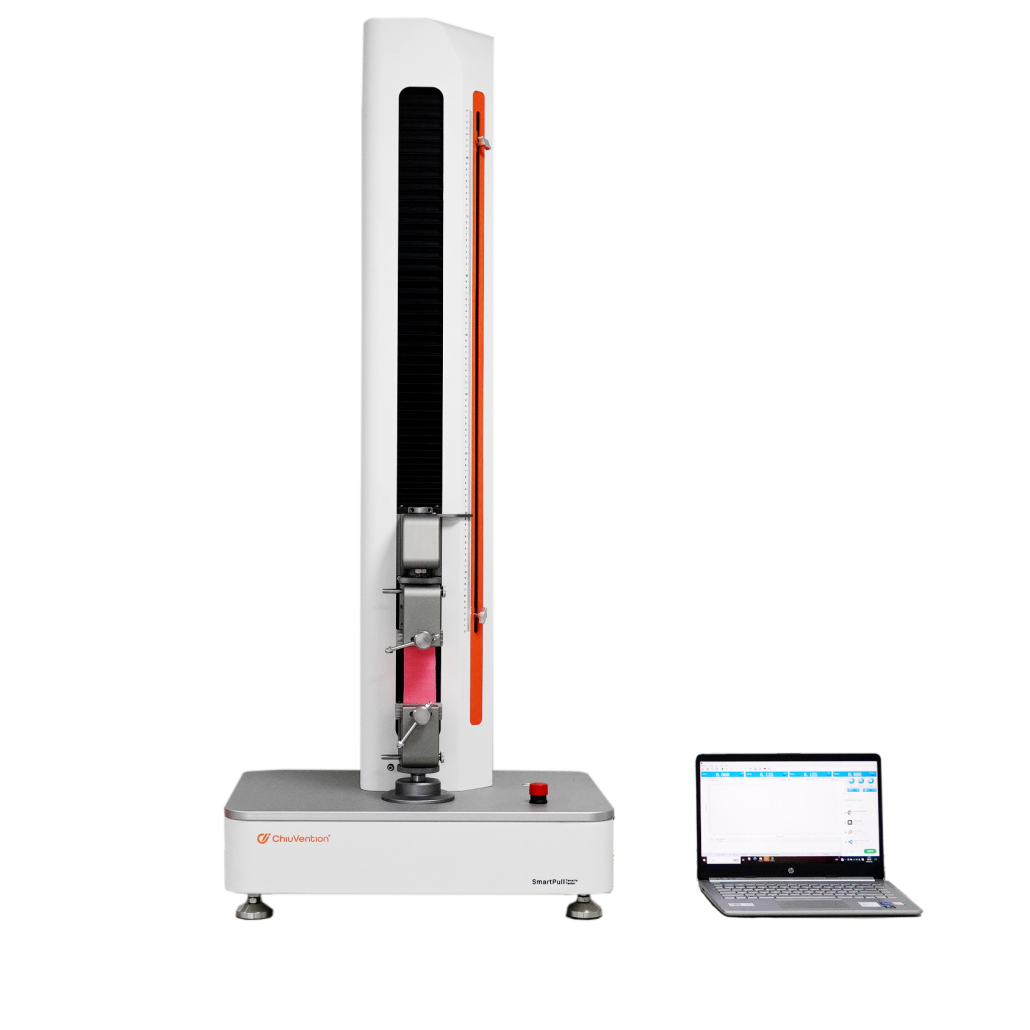
Top Crosspiece:
- Positioned at the upper part of the machine frame, the top crosspiece is constructed from steel. It serves as a crucial component for maintaining the structural integrity of the UTM.
Lower Crosspiece:
- Similarly constructed from steel, the lower crosspiece is located at the bottom of the machine frame. Together with the top crosspiece, it ensures stability during testing operations.
Movable Crosspiece:
- The UTM incorporates a movable crosspiece capable of vertical movement at a consistent speed. This movable element applies force during tests, facilitating controlled and accurate assessments of material properties.
Load Cells:
- Load cells, acting as force transducers, measure the applied load during testing. Regular calibration is essential to maintain accuracy in load measurement.
Claws and Actuators:
- These components play a pivotal role in securing specimens or products for testing. Claws and actuators provide the means to apply forces and deformations to the materials under examination.
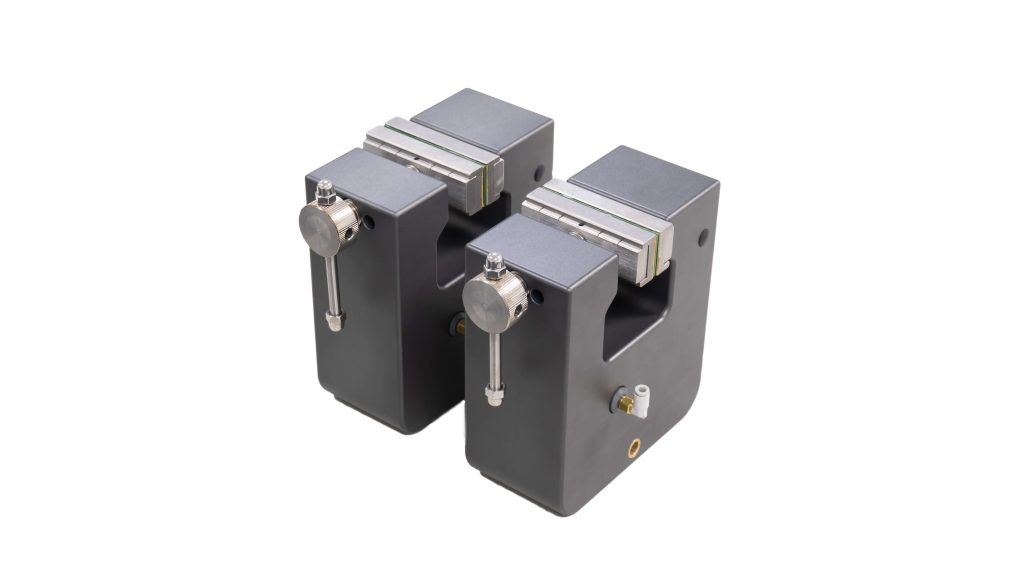
Extensometer:
- An extensometer is a device employed for measuring the extent of deformation in materials subjected to testing. It aids in capturing precise data related to material behavior under load.
Software:
- UTM systems are equipped with software for recording and presenting test results. Modern machines often feature advanced software capabilities, including data processing and calculation functionalities. This enhances the analytical capabilities of the testing process.
Conditioning:
- External to the UTM, conditioning involves the control of specific test conditions such as temperature, humidity, or pressure. This may be achieved through the use of controlled environments, such as test chambers or rooms. This ensures that external factors do not compromise the accuracy of the tests.
Tensile testing machines come in diverse sizes and force capacities, spanning from 0.02 N to 2,000 kN. For low-force testing, electromechanical single-column or dual-column tabletop machines are commonly employed. Conversely, higher force applications necessitate the use of floor model frames.
Q4: What should we pay attention to when purchasing a tensile tester?
Tensile testing machines are widely used for assessing physical and mechanical properties of materials, both metal and non-metal. They are essential for tasks like research, education, and quality control. When purchasing such a machine, consider the following aspects:
Identify Your Needs:
- Determine the specific tests your products require. Universal tensile testing machine can perform various tests like compression, elongation, and tensile strength. Different models and fixtures are available for different tests, impacting the overall price.
Test Itinerary:
- Choose the test itinerary based on your product specifications. Tensile machines on the market typically offer strokes between 600mm and 1000mm. Consider the parts and materials of your test products when making this decision.
Pulling Force Range:
- The required pulling force range influences the type of sensors and machine structure needed. While it has minimal impact on the price, choosing the appropriate range is crucial. For instance, flexible packaging manufacturers often find a pulling force range of 100 Newtons sufficient for their needs.
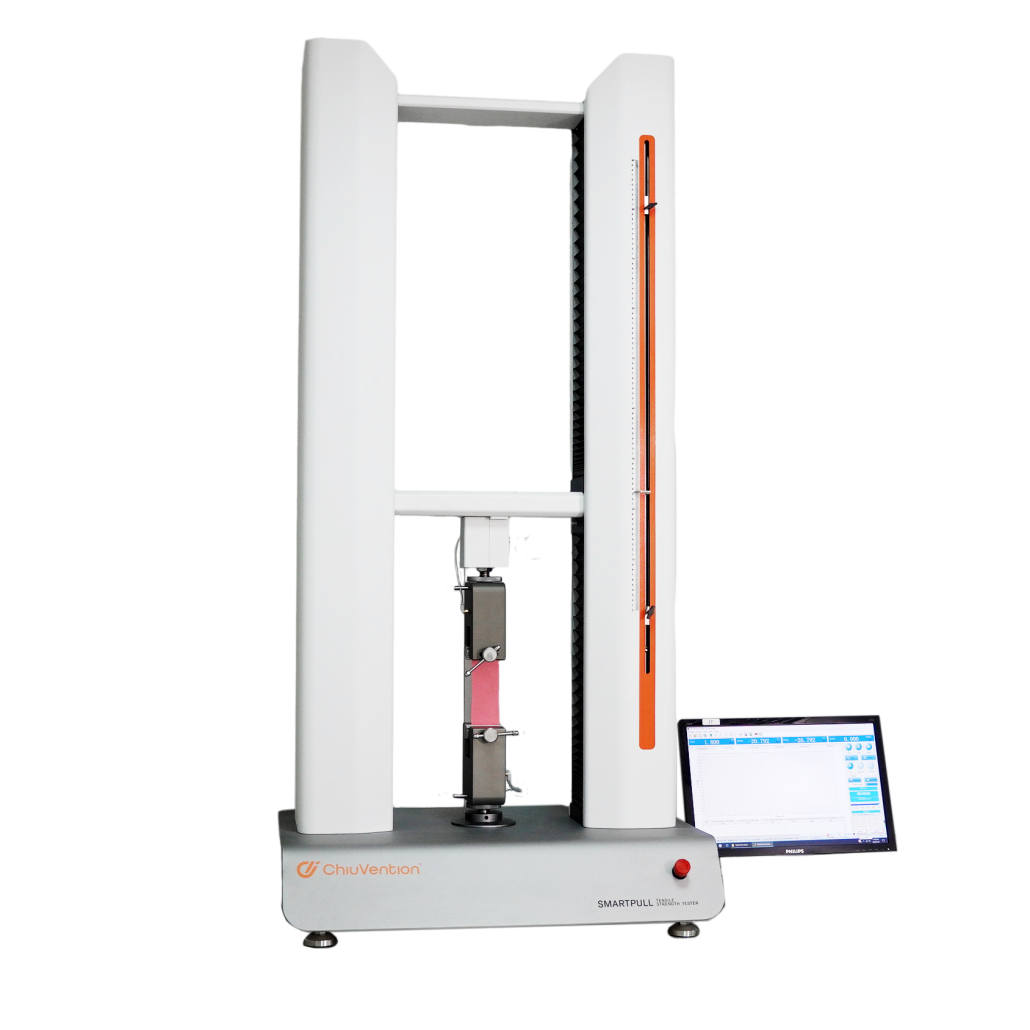
Result Output:
- Evaluate the test result output options, including tensile strength, maximum force value, elongation rate, and more. Some tensile strength testers can output comprehensive data, while others may offer a more limited set of results. Consider your specific needs and the capabilities of different machines.
Test Speed:
- Take into account the test speed required for your applications. The market offers a range of speeds, and the choice between ordinary motors and servo motors depends on the desired accuracy and resolution. Manufacturers should select a speed that aligns with their actual testing needs.
Accuracy Considerations:
- Assess the accuracy of the tensile strength tester, including force measurement, speed, displacement, and deformation accuracy. The required precision depends on your industry and testing needs. For general applications, an accuracy level of ±1% may be sufficient, and force resolution is typically high.
Q5: How to choose the most suitable tensile tester for your test?
When choosing a Universal Testing Machine for your specific testing needs, keep these important factors in mind:
ASTM and ISO Requirements:
- Check the standards (ASTM and ISO) for your testing materials. These guidelines provide details like recommended equipment and test parameters, ensuring your UTM meets the necessary standards.
Material Characteristics:
- Consider the type, weight, and size of the materials you’ll be testing. Make sure that the tensile strength testers you choose are versatile, accommodating various materials such as rubber, metal, and plastic.
Maximum Load Capacity:
- Think about the maximum load your tests require. There are different UTM models with varying load capacities so make sure you choose the right size for your specific needs.
Types of Tests:
- Understand the tests you want to perform. Tensile strength testers are customizable and can handle tests like tensile, compression, torsion, and more.
Versatility for Future Needs:
- Plan for the future. Consider a tensile strength testing machine that can adapt to different materials and tests you might need in the future. This way, you make a smart investment in a machine that remains useful over time.
Q6: What are the different types of test methods for tensile tests?
A tensile strength testing machine can assess the mechanical properties of materials through various methods. Some of the main test types are:
- Tensile test
- Compression test
- Shear test
- Bend test
- Flexural test
- Friction test
- Tear test
- Peel test
- Bond test
- Indentation test
- Fracture test
- Puncture test
- Crush test
- Axial torsion test
- Dynamic test
Q7: What are the features of a good quality tensile tester? What are the automation functions?
A good quality tensile strength testing machine should possess several key features to ensure accurate and reliable testing. Here are some essential features to look for:
Accuracy and Precision:
- The machine should provide precise and accurate measurements to ensure reliable tensile test results. High accuracy is crucial for meaningful data in materials testing.
Load Cell Calibration:
- Regular calibration of the load cell is essential to maintain accurate force measurements. Look for a pull tester machine that allows for easy and periodic load cell calibration.
Robust Construction:
- A sturdy and well-built frame is important for stability and repeatability during testing. The pull tester machine should be able to withstand the forces applied during testing without introducing vibrations or distortions.
Versatility in Testing:
- A good pull tester machine should be versatile, allowing for a variety of tests such as compression, bending, tensile, and more. This adaptability ensures that the pull tester machine can meet a range of testing needs.
User-Friendly Interface:
- An intuitive and user-friendly interface is important for easy operation. The pull tester machine should have a clear control panel and software that enable users to set up tests, monitor progress, and analyze results with ease.
Safety Features:
- Safety is paramount in any testing environment. Look for features like emergency stop buttons, overload protection, and interlocking mechanisms to ensure the well-being of operators and prevent damage to the machine.
Data Acquisition and Analysis:
- The machine should have a robust data acquisition system for recording and analyzing data during testing. Modern machines often come with advanced software that simplifies data analysis and report generation.
The tensile testing machine can automatically calculate stress, elongation (using an extensometer), tensile strength, and elastic modulus. It also counts the results and records important data points like force values at the maximum, breaking, and specified points during testing.
Q8: When buying a tensile tester, what supporting fixtures are usually selected?
When buying a tensile testing machine, choose supporting fixtures based on the type of tests you’ll perform and the materials involved:
- Wedge Grips: For various materials, providing a secure grip.
- Pneumatic Grips: Quick loading and unloading, ideal for high-volume testing.
- Vice Grips: Adjustable jaws for irregular specimens.
- Serrated Grips: Prevent slippage, suitable for softer materials.
- Threaded Grips: Secure attachment for threaded specimens.
- Bend Fixtures: Assess flexibility and resistance to fracture.
- Compression Platens: Flat surfaces for compressive testing.
- Peel Fixtures: Evaluate adhesion strength between materials.
- Grips for Films and Foils: Specialized for thin materials.
- Environmental Chambers: Control temperature and humidity during testing.
Q9: How to maintain and care for the tensile testing machine in general?
To ensure prolonged and efficient operation of your universal testing machine, follow these essential care tips for convenient material testing:
Regular Greasing:
- Conduct greasing every three months to maintain smooth functionality.
Correct Specimen Placement:
- Ensure proper placement of the specimen before initiating the test procedure for accurate results.
V-Belt Drive Maintenance:
- Tighten the V-belt drive every three months and inspect for wear and tear. Promptly replace any worn-out V-belts to sustain optimal performance.
Annual Gear Oil Top-Up:
- Annually replenish the gear oil in the gearbox to ensure proper lubrication and efficient functioning.
Check Limit Switch Rings:
- Before commencing the test, verify the placement of limit switch rings to prevent any operational issues.
Lead Screw Lubrication:
- Apply grease regularly, every three months, on the lead screw of vice-type grips to enhance durability and performance.
By adhering to these simple yet crucial care practices, you can extend the lifespan of your tensile strength tester and facilitate seamless material testing.
Q10: What are the tensile tester common faults and how to deal with them?
Ensuring accurate quality tests with a tensile strength tester is crucial, and avoiding common errors is key. Here are 5 common mistakes and ways to prevent them:
- Inaccurate Sample Placement:
- Mistake: Poor placement results in inaccurate test outcomes.
- Prevention: Place the sample precisely on the testing instrument for highly accurate results.
- Unexpected Results due to Calibration Issues:
- Mistake: Calibration problems can lead to unexpected results.
- Prevention: Consult with experts for calibration when needed to maintain accurate testing.
- Unawareness of Load Cell Capacity:
- Mistake: Not knowing the machine’s load cell capacity can result in testing errors.
- Prevention: Understand the technical specifications of the testing machine to avoid errors.
- Incorrect Grip Size:
- Mistake: Using the wrong grip size leads to testing errors.
- Prevention: Consult with a tensile test specialist and use standard grips for guaranteed accurate results.
- Improper Grips Tightening:
- Mistake: Incorrectly tightened grips can cause sample slippage.
- Prevention: Ensure accurate tightening of grips during sample placement to prevent issues.
Q11: What are the most commonly used international test standards for tensile testing?
Testing every part, material, or product according to established methods is crucial for reliable results. Technical standards, such as NBR ABNT, ISO, DIN, ASTM, etc., play a vital role in ensuring universal consistency in handling, measurements, preparation, analyses, calculations, and sample use conditions. These standards also specify the required specimens for testing each material and characteristic.
For tensile testing, ASTM and ISO are commonly used standards, and some frequently referenced ones include:
- Metals: ASTM E8, ASTM E21, ISO 6892-1, ISO 6892-2
- Rubber and elastomers: ASTM D412, ISO 37
- Composites: ASTM D3039, ISO 527-4/-5
- Plastics: ASTM D638, ISO 527-2
Following these standards ensures standardized testing procedures and reliable outcomes across various materials and characteristics.
Q12: What is the different rate of a tension test? Why set different rates?
For standard tensile testing of metallic materials (following ASTM E8(M)), the recommended strain rate is typically between 0.0001 to 0.01 /s (engineering strain rate). However, for assessing crashworthiness in scenarios like automobile crashes, the local strain rates can be very high, ranging from 100 to 1000 /s.
In such cases, the traditional ASTM E8(M) standard is not applicable. Instead, a more recent ISO standard has been introduced to address tensile testing at these higher strain rates.
Setting different strain rates in materials testing is essential for accurately simulating real-world conditions and assessing materials under diverse applications. This practice ensures that testing reflects the specific rates of deformation materials may encounter in different industries, such as aerospace applications, safety assessments, automotive crashes, dynamic behaviors, and regulatory compliance. By adjusting strain rates, testing becomes more relevant and provides valuable insights into material performance in varied scenarios.
Q13: What is the price range of a tensile tester?
As of 2024, the cost of a universal tensile testing machine varies between $12,900 and $150,000. The primary factors influencing the price include force capacity, test space, and the controller. Among these factors, force capacity has the most significant impact. Here’s a breakdown of the price ranges based on force capacity:
- Low Force (1 kN to 25 kN max force): $12,900 to $30,000.
- Medium Force (50 kN to 150 kN max force): $32,000 to $57,000.
- High Force (300 kN to 2,000 kN max force): $77,000 to $150,000.
Understanding these factors helps in determining the appropriate universal test machine based on specific testing needs and budget considerations.
Q14: What are the requirements for preparing a sample for tensile testing?
Ensuring accurate tensile testing requires specific sample preparation guidelines. The sample must be free from nicks or jagged edges to maintain consistency in tensile results and accurately determine the specimen’s physical properties. Handling the sample with care during cutting is crucial. Key requirements for preparing a sample include:
- Specimen Size:
- Uniform width and thickness, extending 2 inches beyond the gage length.
- Sample Width:
- Should not be less than 5mm or exceed 25.4mm. Common widths include 15mm or 25mm.
- Careful Cutting:
- Exercise utmost care to avoid nicks and tears, preventing premature failures.
- Edge Parallelism:
- Ensure specimen edges are parallel within 5% of the width along the length between grips.
Microscopic examination can be employed to detect any flaws arising from the sample or specimen preparation process. Adhering to these guidelines guarantees reliable tensile test results for accurate assessment of material properties.
Q15: What is the usual service life of a tensile tester?
The lifespan of a fabric tensile tester can vary depending on several factors, including the quality of the machine, the frequency of use, maintenance practices, and the conditions in which it operates. High-quality fabric tensile testers that are well-maintained and used within their specified limits can last for many years.
Typically, fabric tensile testers are designed to be durable and withstand the rigors of testing various materials under tension. Regular maintenance, calibration, and proper usage contribute to extending the lifespan of the equipment. Some fabric tensile testers may last for a decade or more if they are well taken care of, while others may have a shorter lifespan if subjected to harsh conditions or used beyond their designed capacity.
It’s essential to follow the manufacturer’s guidelines for operation, maintenance, and calibration to ensure the longevity and accuracy of the tensile testing machine.
Q16: What is the meaning of the response rate of a tensile tester? What is its significance?
The response rate of a fabric tensile tester refers to the speed at which the machine reacts to changes in the applied force during a tensile test. In other words, it measures how quickly the machine can adjust to variations in force, strain, or displacement during the testing process.
The significance of the response rate in a tensile testing machine lies in its impact on the accuracy and reliability of the test results, especially when dealing with dynamic or rapid loading conditions. A higher response rate allows the machine to capture and process data more quickly. This provides a more accurate representation of the material’s mechanical behavior, particularly in situations where the load is changing rapidly.
Key points about the significance of response rate in a tensile testing machine:
- Dynamic Testing: In dynamic or high-speed testing scenarios, such as testing the properties of materials under impact or fatigue conditions, a higher response rate is crucial. It ensures that the machine can keep up with the rapidly changing forces and provide accurate data.
- Material Behavior Analysis: Different materials exhibit various responses to force application, and some materials may behave differently at high loading rates. A higher response rate allows for a more detailed analysis of the material’s behavior, particularly in dynamic applications.
- Precision and Accuracy: A faster response rate contributes to the precision and accuracy of the recorded data. It helps in capturing the material’s response to applied forces with greater detail, which is essential for understanding its mechanical properties.
- Testing Efficiency: For routine testing where speed is a factor, a higher response rate can improve testing efficiency by reducing the overall testing time.
Q17: What are the most well-known brands of tensile testers? And tensile testing machine manufacturers?
There are several brands of tensile testing machines. Here are some of the most popular:
- Benz Co., Inc
- Shimadzu Scientific Instruments
- Daniels Manufacturing Corporation
- ADMET, Inc
- ChiuVention
- Epsilon Technology Corp
- Instron
- TestResources Inc
Q18: How to ensure the quality of a tensile tester when buying it from overseas?
Ensuring the quality of a tensile testing machine when buying it from overseas involves careful research, communication with the supplier, and possibly third-party assessments. Here are steps you can take to ensure the product meets your requirements:
- Research Suppliers:
- Look for reputable suppliers with a history of delivering high-quality testing equipment.
- Check online reviews, testimonials, and ratings from other customers who have purchased from the supplier.
- Verify Certifications:
- Ensure that the supplier and the product comply with relevant international standards and certifications for tensile testing machine.
- Sample Testing:
- If feasible, request a sample or a demonstration of the tensile testing machine before making a bulk purchase. This allows you to assess its performance firsthand.
- Factory Audit:
- Consider conducting or hiring a third party to perform a factory audit. This involves assessing the supplier’s facilities, production processes, and quality control procedures.
- Product Warranty:
- Check the warranty offered by the tensile testing machine supplier. A reputable supplier should provide a warranty that covers defects and malfunctions for a reasonable period.
- Reference Checks:
- Ask the tensile testing machine supplier for references from other customers who have purchased similar equipment. Contact these references to inquire about their experiences with the supplier and the product.
- Payment Terms:
- Clearly understand the payment terms, including milestones, and ensure they align with the delivery and inspection process.
- Shipping and Handling:
- Clarify shipping and handling procedures, including packaging, insurance, and responsibility for any damages during transit.
Q19: What are the usage steps of a tensile tester?
The steps for Using a Tensile Testing Machine are as follows:
- Prepare Specimens: Mark the original gauge range and measure the diameter using a vernier caliper. Calculate the original cross-sectional area.
- Adjust the Machine: Estimate the maximum load based on tensile strength. Set up the tensile testing machine, zero the pointer, and ensure proper alignment.
- Install the Specimen: Clamp the specimen in the upper chuck and position the lower chuck securely.
- Verify Measurements: Have an instructor check the setup. Start the tensile testing machine, apply a small preload, and ensure it returns to zero.
- Perform the Test: Gradually apply a load, record the yield value, and observe any necking. Stop the test at the maximum load.
- Remove Specimen: Safely remove the specimen and collect the recording paper.
- Measurements: Measure the necking diameter and other relevant distances.
- Conclusion: Have the instructor review the test record. Clean up and organize the tensile testing machine.
- Data Summary: Organize collected data and complete a simple tensile test report summarizing key observations.
Q20: Through the test data, how to assess whether the test value of the textile is up to the standard?
To assess whether the test values of a textile meet the required standards, it is essential to refer to applicable industry standards or specifications, often provided by organizations like ASTM or ISO.
- Review the test parameters employed during tensile testing, such as tensile strength and elongation, and compare the obtained results with the specified standards.
- Pay attention to acceptable variability within the standards and ensure consistency by testing multiple samples.
- Check for specific requirements, such as flame resistance or colorfastness, and consult industry experts or guidelines for interpretation if needed.
- Document the findings, including any deviations and potential influencing factors, and consider adjustments to testing procedures if the results fall short.
- Implement continuous improvement measures to enhance testing accuracy. Ensure that future test values consistently meet or exceed the specified standards.
For more textile testing knowledge, instrument knowledge, and textile testing laboratory knowledge, please contact us at sales@chiuvention.com.
WhatsApp +86 180 2511 4082
